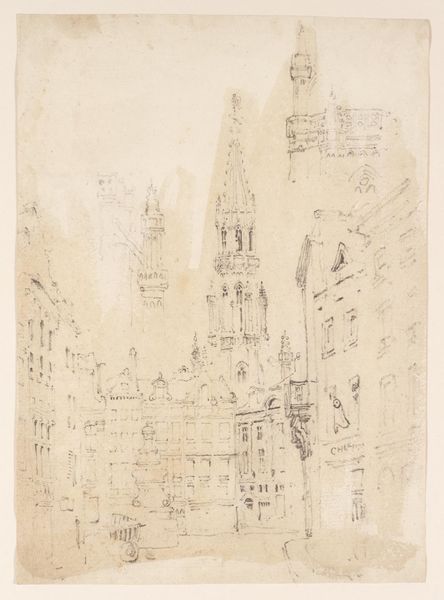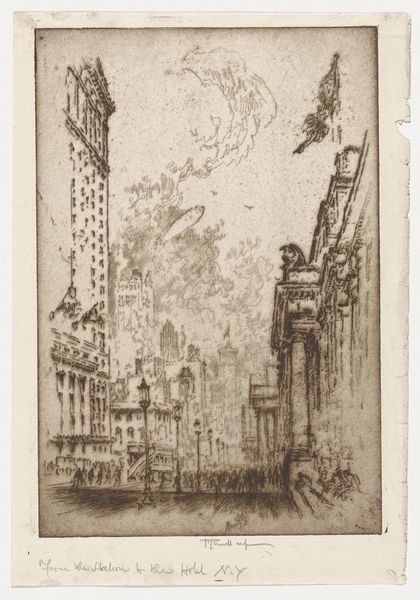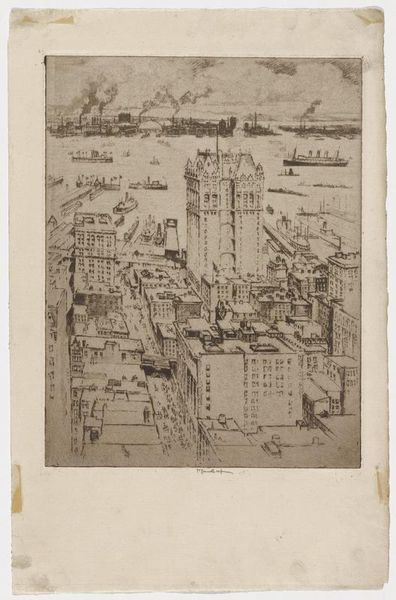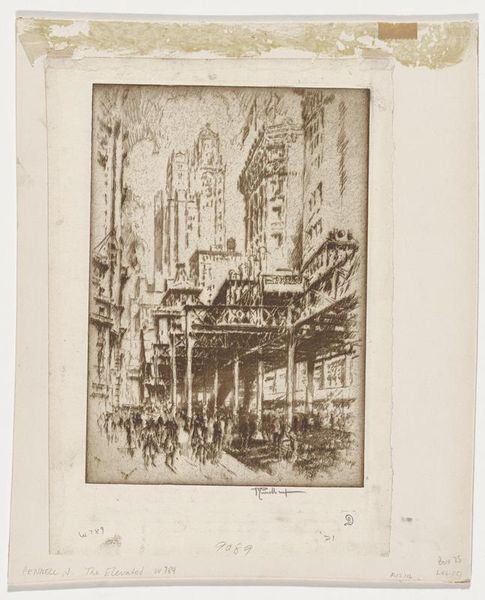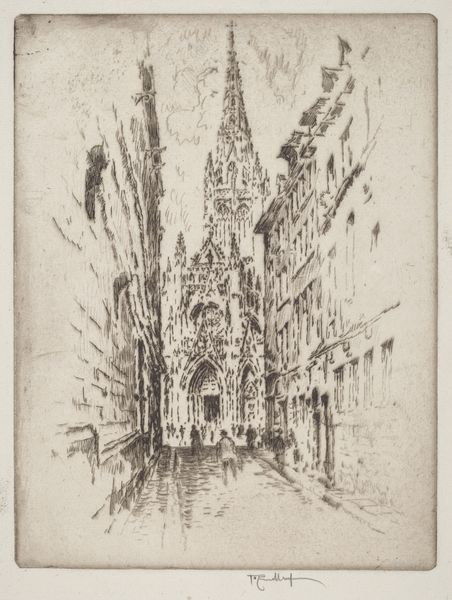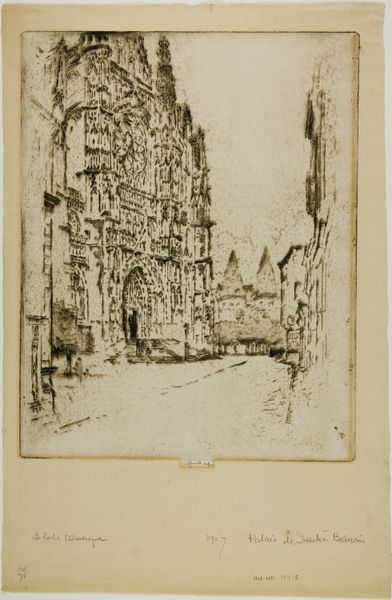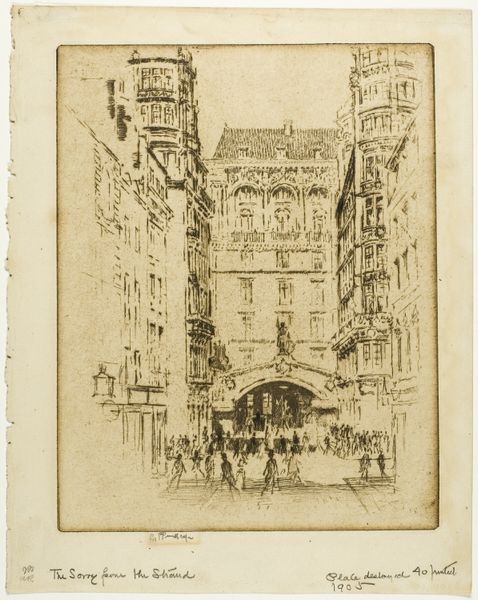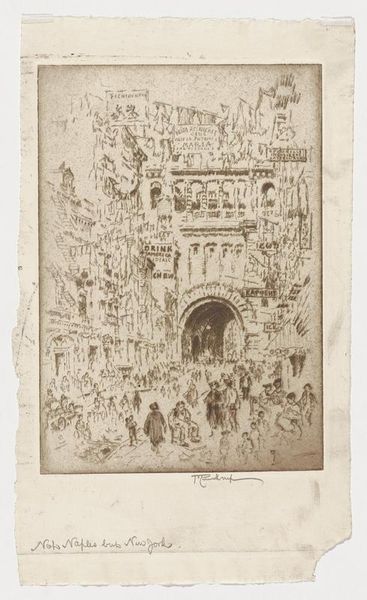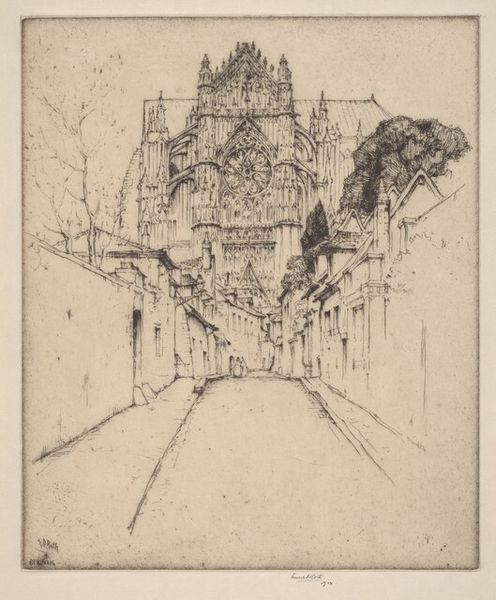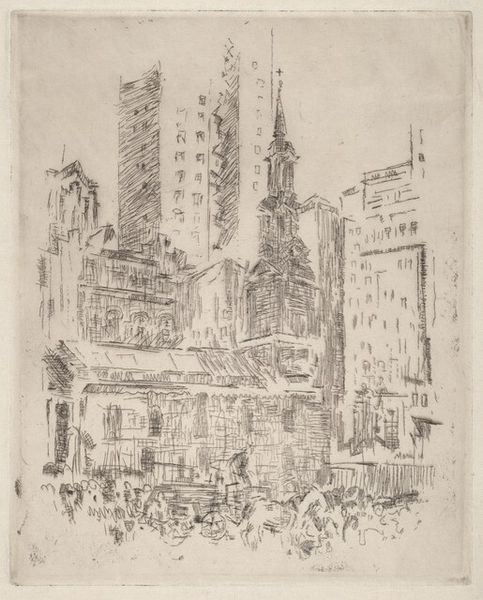
print, etching
#
landscape illustration sketch
#
toned paper
# print
#
etching
#
pencil sketch
#
old engraving style
#
etching
#
pen-ink sketch
#
traditional art medium
#
united-states
#
watercolour illustration
#
pencil art
#
watercolor
Dimensions: 9 13/16 x 6 13/16 in. (24.92 x 17.3 cm) (plate)11 13/16 x 8 in. (30 x 20.32 cm) (sheet)
Copyright: No Copyright - United States
Curator: Looking at this etching, Joseph Pennell's "Trinity Churchyard," completed in 1921, I feel a kind of melancholy beauty. It's incredibly detailed but soft at the same time. Editor: Yes, the sepia tones give it a definite nostalgic feeling. The towering buildings surrounding the church seem almost to swallow it, which speaks volumes about power dynamics, doesn't it? The way capitalism and modernity loom over even the sacred. Curator: Absolutely. I’m always drawn to the people in the foreground, though. The tiny figures on the benches invite contemplation, right in the face of the urban frenzy all around. It’s like finding a moment of peace within a whirlwind, a reminder that even amidst monumental architecture, life goes on at a human scale. It reminds me of finding my own quiet corner in the city. Editor: I think you’ve hit on something key. Pennell often portrayed the tension between tradition and progress, and it really is at the heart of this work. The gothic revival architecture of Trinity Church itself, surrounded by early skyscrapers, it's this incredible visual representation of the changing urban landscape of New York. This image serves as a critique of the often brutal processes of modernization. Curator: It’s so evocative. You can almost feel the hushed atmosphere of the churchyard amidst the cacophony of the city. His technique—the intricate, almost delicate etching lines— adds a layer of quiet contemplation. Pennell really captured not just a place, but a feeling, a moment in time. I see almost like a haiku: stark juxtapositions inviting reflection. Editor: Agreed. It's an intersection, quite literally, between architectural form and social space. It asks us to consider how our environments shape our experience, and the stories that are embedded within them. Are these churchgoers seeking sanctuary, or simply weary workers seeking a moment of respite? Pennell doesn't offer easy answers, he lays bare a society in rapid transformation. Curator: Ultimately, Pennell provides an important historical marker that still manages to echo through time. It is a glimpse into a city’s past—a beautifully wrought question mark in visual form. Editor: Yes, a stark but visually poetic meditation on faith, progress, and the enduring human search for solace within an ever-evolving world.
Comments
No comments
Be the first to comment and join the conversation on the ultimate creative platform.

